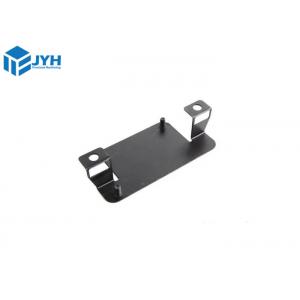SECC SPCC SGCC Sheet Metal Fabrication Prototype Services By Laser
Cutting Process
JYH Precision Sheet Metal Fabrication Service
We specialize in lighter gauge materials, anywhere from .008 thick
up to .250 in some alloys. We work in steel, aluminum, pre-coated
alloys, copper, brass, and some plastics, and utilize three CNC
turret presses to punch out any contour you might require. These
are backed up by complete quality control, shearing, deburring,
brake, welding and hardware departments. We only use top grade,
prime materials, with traceability back to the original
manufacturer, for every piece we create. We can provide
certificates of conformance, material, and plating/paint
certifications for any job that requires it. All certifications are
scanned by job and kept on record indefinitely.
- ISO 9001: 2015
- Fast delivery service with DHL/FEDEX/UPS
- Standard-DIN-2768-1-fine
- Free quotation with DFM review in 1 hours
- Deburr all sharp edges: 0.1 - 0.2 mm
- Surface roughness: Ra 1.6
- Sandblast 180# before anodize color
What Are Laser-Cut Prototypes?
Prototyping using laser cutting is the non-contact cutting process
of using electromagnetic energy to create parts for design and
functional verification prior to mass production. Laser cutting
technology is made possible by the use of a focused, coherent beam
of light that is conditioned by a series of mirrors and lenses to
create a spot as small as one square micron.
JYH Precision Quality assurance
Our unwavering commitment to product quality assurance in sheet
metal fabrication is evident in every aspect of our process.
Our ISO 9001:2015, ISO 13485, and AS9100D certifications reinforce
our commitment to maintaining the highest standards.
JYH Precision Available materials for sheet metal:
Below is a list of our standard available metals for sheet metal
fabrication
Aluminum
|
Stainless steel
|
Mild steel
|
Copper
|
| 5052/6061 | 304/316 | 1018/A36 | C110 |
JYH Precision Sheet Metal Fabrication Standards
| Dimension Detail | Metric Units | Imperial Units
|
Edge to edge, single surface |
+/- 0.127 mm |
+/- 0.005 in. |
Edge to hole, single surface |
+/- 0.127 mm |
+/- 0.005 in. |
Hole to hole, single surface |
+/- 0.127 mm |
+/- 0.005 in.
|
Bend to edge / hole, single surface |
+/- 0.254 mm |
+/- 0.010 in. |
Edge to feature, multiple surface |
+/- 0.762 mm |
+/- 0.030 in. |
Why use JYH’s for sheet metal fabrication?
Fast quoting & Free DFM feedback
| High Quality & reliability |
Build and edit your quote within 30 minutes. Review your parts for
manufacturability and assess the cost of different materials,
processes and lead times for your project in real time.
| Dedicated JYH’s team to ensure your parts consistently meet your
quality expectations. We also offer phone, email and chat support
for any concerns or questions you may have. |
JYH Precision Available Sheet Metal Fabrication Processes
| Processes | Description | Thickness | Area |
Laser Cutting | Laser cutting is a thermal cutting process that uses high-power
laser to cut metals. |
Up to 40 mm
|
Up to 4000 x 6000 mm |
Water jet Cutting | It finds particular utility in the cutting of highly thick metals,
notably steel. |
Up to 200 mm |
Up to 3000 x 6000 mm |
Plasma Cutting | CNC plasma cutting proves effective for slicing through thicker
sheet metals. |
Up to 40 mm
|
Up to 4000 x 6000 mm |
Bending | It is utilized to sculpt customized prototypes of sheet metal
subsequent to the cutting procedure. |
Up to 20 mm |
Up to 4000 mm |
JYH Precision surface finishes for sheet metal
Surface finishes are applied after machining and can change the
appearance, surface roughness, hardness and chemical resistance of
the produced parts.
Picture of surface finish
|
Name
|
Description
|
|
Standard surface finish | This is our standard finish. Parts as delivered as cut and bent, no
additional treatment applied. Sharp edges are broken and deburred
for safe handling. |
| Sand Bead Blasted | Parts are bead blasted with glass beads which results in a grainy
texture. Sharp edges are broken and deburred for safe handling. |
| Brushed | Parts are manually brushed with grit #180 after cutting and
bending. Sharp edges are broken and deburred for safe handling.
Ideal to reduce the surface roughness of a part. |
| Brused + Anodized type II | Parts are dipped in an anodizing bath (type II) after manual
brushing. Ideal for increasing the corrosion resistance of the
part. Ideal for increasing the corrosion resistance of the part. |
| Powder coating | Powder coating layer is applied directly after fabrication. Sharp
edges are broken and deburred for safe handling. |
| Black oxidization | Parts are dipped in a black oxide bath after fabrication. Ideal to
improve improve corrosion resistance and minimize light reflection
in steel components. |
JYH Precision Shipping way
JYH Precision Payment method
JYH Precision workshop
Frequently Asked Questions
1. What’s K factor in sheet metal?
K factor is the sheet metal process is the ratio of neutral axis to
material thickness. This value changes with respect to the various
physical properties and thickness of materials used.
2. What are the tolerances for fabricated parts?
Sheet metal fabrication tolerances refer to the acceptable
deviations for features of sheet metal parts required for accurate
and consistent installation and integration.For sheet metal parts,
ISO 2768-mk is usually used to ensure proper control of the
elements of geometry and size.
The following will show you 7 tolerance standards range of linear
and angular dimensions, flatness & straightness, cylindricity, and
circularity.
3. How much does sheet metal fabrication cost?
Every aspect of a sheet metal fabrication project comes with an
associated cost — the design, possible prototype, finishing
processes, and others. Asides from the process itself, materials
also cost money.
JYH is your best partner of Sheet Metal Fabrication SPCC Steel 7075
Parts Service For Medical Equipment!



